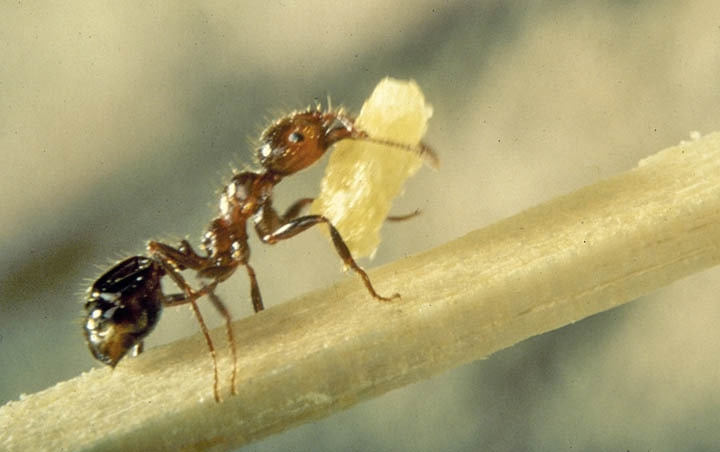December 12, 2013

O for the invasive salad days of fire ant devils and searing stings. There’s a new invasive kid on the block that swarms like a fire ant on crack — neurotic, unpredictable crazy ants, and their spread is on across the South and Southwest, and in time their march will be coast-to-coast.
Despite an innocuous name (tawny, rasberry, crazy … pick your handle), the ants move in waves of destruction and are capable of devouring anything and everything. They don’t grip skin with iron jaws and then jab a stinger up-and-down like fire ants, but instead dominate with numbers, a frenzied march, absence of natural predators, and total lack of colony borders. It’s not exactly fond remembrance for fire ants, but Edward LeBrun, a University of Texas, Austin researcher, tells redOrbit: “Fire ants are in many ways very polite. They live in your yard. They form mounds and stay there, and they only interact with you if you step on their mound.”
See related — Fire ants vs. Benadryl a battle of pain
LeBrun’s description of “polite” fire ants will be questioned by many, but regardless, the economic and environmental threat from crazy ants is real and is mounting. From ABC: “The damages can be extreme. In one year alone, researchers documented $146.5 million in damages to electrical equipment just in Texas.”
Crazy ants threaten anything electrical — farm machinery, vehicles, computers — even more than fire ants due to overwhelming numbers. It takes only a single ant to hit a hot wire and get fried, releasing a flow of pheromones and turning the area into a red light district. That brings on ant flow in quick-step fashion, all headed for the pheromones and the hot wire. Death by orgy for the ants; and the machine.
From the NYT: “Entomologists report that the crazy ants, like other ants, seem drawn to electronic devices … But with crazy ants, so many will stream inside a device that they form a single, squirming mass that completes a circuit and shorts it. Crazy ants have ruined laptops this way and, according to one exterminator, have also temporarily shut down chemical plants.”
No way out
Native to Brazil and officially discovered in 2002 by Tom Rasberry, a Houston exterminator, crazy ants took root in suburbia, hiding in plain sight. Invasive species cost the United States over $100 billion in control each year and while 13 federal agencies share invasive police duties, the system, while not porous, has holes: “By appearing first in suburban neighborhoods and not, say, national forests or wildlife refuges or farmland, they colonized the territory between various agencies’ jurisdictions. The government’s system is reactive, not proactive, and so only recently has the species surged into regulatory review … The Department of Agriculture still doesn’t consider the ants a ‘pest of agricultural significance.’”
Their rate of spread is debated, but at least breeding crazy ants can’t fly, limiting their range to a slow, but sure, expansion. Rasberry believes the window to stop their initial spread has closed: “I think we’ve missed all the real opportunities. There’s no way out.”
The environmental and ecological damage may be only just beginning: “You knock nature off balance, and ain’t nobody there to catch her.”
Follow me on Twitter: @CBennett71 or email me: [email protected]
Blog archive
Wine from a rock at Gorgona’s island prison
Gun control and agriculture clash over homemade pistol
Water sommeliers really exist (even in America)
Farmland hides mobster for 10 years
What are the greatest agriculture breakthroughs in history?
Oil tankers, not icebergs, a water scarcity solution?
Harold Hamm, sharecropper to oil and fracking tycoon
The myth of the aging US farmer
Pig farmer replays Deliverance with repo men
Where is one-fifth of the world’s fresh water hiding?
You May Also Like




